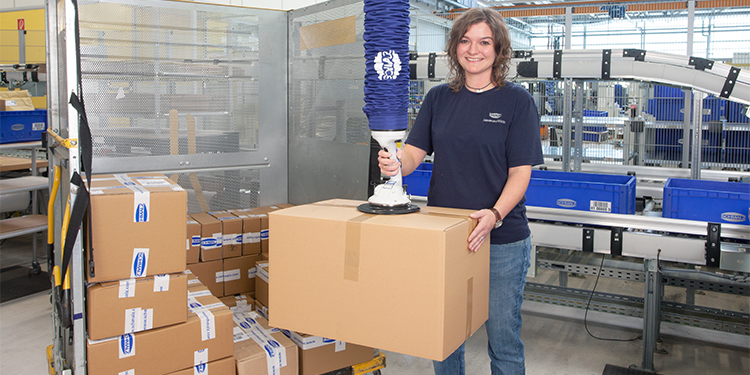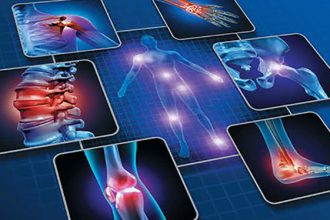E-Commerce And Ergonomics: The Evolution Of Lift Assist Devices To Support Diverse Picking Tasks

This post is part of the EASE Council’s Educational Series: E-Commerce and Ergonomics
The latest findings from Digital Commerce 360 confirm what many in retail distribution already knew: that COVID-19 prompted exponential growth in online shopping and e-commerce order fulfillment. In the U.S., e-commerce grew 32% in 2020, and tapered back to 14.2% in 2021 as lockdowns lifted and shoppers returned to brick-and-mortar stores. But the pandemic ultimately increased the number of e-commerce users worldwide by 9.5% year-over-year to an excess of 3.4 billion. And the growth trend is expected to continue, with 4.9 billion shoppers forecast to spend $563.4 billion by 2025.
The impact on warehousing, fulfillment, and distribution centers—particularly those in the retail field shipping consumer goods—has been significant. Retail operations that initially built pallets of mixed products to ship to stores for replenishment have seen a substantial shift to one- or two-line item orders shipped directly to the consumer. With the movement toward ordering more online and greater competition from other e-commerce vendors has come an increase in the variety and type of products available to shoppers. Everything from dental floss and cookware to refrigerators and sofas can be bought online now. This has made picker’s jobs more physically demanding as they stretch, reach, pull, lift, push, carry, hold, bend, and more to select items across a huge range of shapes, sizes, and weights to fill orders.
With all that physical effort required to fill orders, it’s no wonder that the Occupational Health and Safety Administration (OSHA) and the Bureau of Labor Statistics found overexertion and repetitive motion to be the fourth and fifth most common cause of workplace injuries respectively among their Top 10 in 2020. Both are often the result of the cumulative effect of performing the same strenuous activities on a daily basis. To help reduce their employees’ risk of injury while simultaneously helping them be more productive, more order fulfillment operations are considering ergonomic solutions such as vacuum lifters, workstation cranes, and other overhead lift assist devices that enable employees to handle heavy loads repeatedly with less physical strain.
As the types of products handled by pickers have shifted throughout the past decade, so too have the designs of ergonomic lift assist equipment and the end effectors they use to connect the lifting device to the load. Their evolution correlates directly with the changing types of loads operators are handling as they fill different types of orders. They include solutions for:
- Small box stacking, where cartons are repeatedly stacked onto or removed from a pallet to build a load. Some of the latest solutions can be operated with a single hand, grip the load either vertically or horizontally, and support continual rotation for precise positioning.
- Large box handling, with larger end effectors that attach to a load at multiple connection points for secure lifting, transport, and manipulation by a single operator instead of requiring a tandem lift.
- Higher picks and lifts, with extended controls that enable the picker to attach the lift assist device’s end effector to a load stored or palletized overhead with minimal strain, stretching, or reaching, then guide it with minimal effort to the optimal working height.
- Multi-location picking, with portability engineered into the lift assist devices. This enables them to be transported by forklift or other motorized vehicle to different locations within a facility for maximum picking flexibility as warehouses continue to get larger and storage locations more spread apart.
Whether in an e-commerce order fulfillment operation or one building pallets for retail store replenishment, there are a variety of ergonomic lift assist solutions available to help minimize the risk of workplace injuries associated with overexertion and repetitive stress. To help operations find the right technology for their unique process, the members of Ergonomic Assist Systems & Equipment (EASE) offer a free publication, “Ergonomic Guidelines for Manual Material Handling.”



